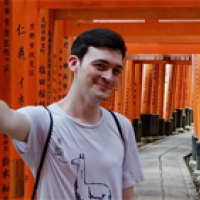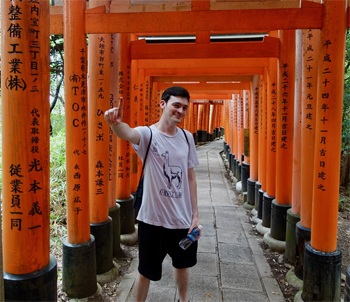
Mathematical snapshots: Daniel Kreuter
Continuing our series of interviews with maths students and early career mathematicians, we talk to Daniel Kreuter. He tells us about his work on the BloodCounts! project, which uses maths to make optimal use of the billions of blood tests performed every year around the globe.

Daniel Kreuter.
I work within the BloodCounts! research group, where we use a form of artificial intelligence called machine learning to interpret and improve the full blood count. The full blood count is an essential test used to inform medical decision making. Moreover, it is the world's most common medical laboratory test - performed an estimated 3.6 billion times yearly.
My work within the group focuses on developing machine learning models and data analysis to improve the diagnostic power of the full blood count and potentially open up new pathways to treating patients.
You can read more about BloodCounts! in this article.
I have always been interested in using mathematics to improve my understanding of a problem. Before I became a PhD student at Cambridge, I did my Bachelor's and Master's degrees in physics at the TU Darmstadt in Germany. During my Master's, I became particularly interested in machine learning as an innovative and elegant application. Machine learning models are designed to spot patterns in data, such as full blood counts from many patients, to make predictions, such as whether there's been an outbreak of an infectious disease in a particular area. They learn how to do this by repeatedly updating their parameters to reduce the error in their predictions, moving towards the lowest model error. [You can find out more about this technique here] From a physicist's point of view, this is much like a ball rolls down a slope towards its lowest point. The maths behind it is the same!
Making the jump from just interesting theory to actual research that could positively impact billions of patients worldwide is a fantastic opportunity I'm glad to be a part of.
One of the most exciting aspects of working on this project is the opportunity to collaborate with experts from different fields. Our interdisciplinary working environment brings together haematologists, data scientists, and software engineers, each contributing unique perspectives and skills to tackle the research challenges. We are constantly learning from each other and sharing insights and feedback. It is fascinating how I am inadvertently picking up medical knowledge by attending meetings and conferences with clinicians, despite not having a medical background.
I spend half of my week at the Department of Haematology and the other half at the Centre for Mathematical Sciences, both at the University of Cambridge. I meet with my supervisors or collaborators almost daily to discuss research questions, progress, or future projects. My work mainly consists of coding, debugging, or running experiments on my computer or Cambridge's high-performance computing system. I use various tools to process, visualise, and model blood data, usually in the programming language Python. Additionally, I attend seminars where other researchers and students present their work. The post-seminar coffee chats always make for great discussions and an opportunity to wind down.
One of my favourite mathematical moments is discovering that theory in one area of maths or physics can be applied to a seemingly unrelated area to gain new insights. An example is the optimal transport problem. You can think of this as the problem of finding an optimal way of moving a pile of earth from one location to another, minimising the kinetic energy required. But it is actually equivalent to finding the most efficient transformation of one probability distribution into another. Optimal transport has many applications, such as understanding the differences between two patients' blood samples or allocating blood volumes from donors to transfusion patients most efficiently. [You can find out more about optimal transport in this article.]